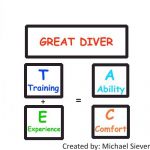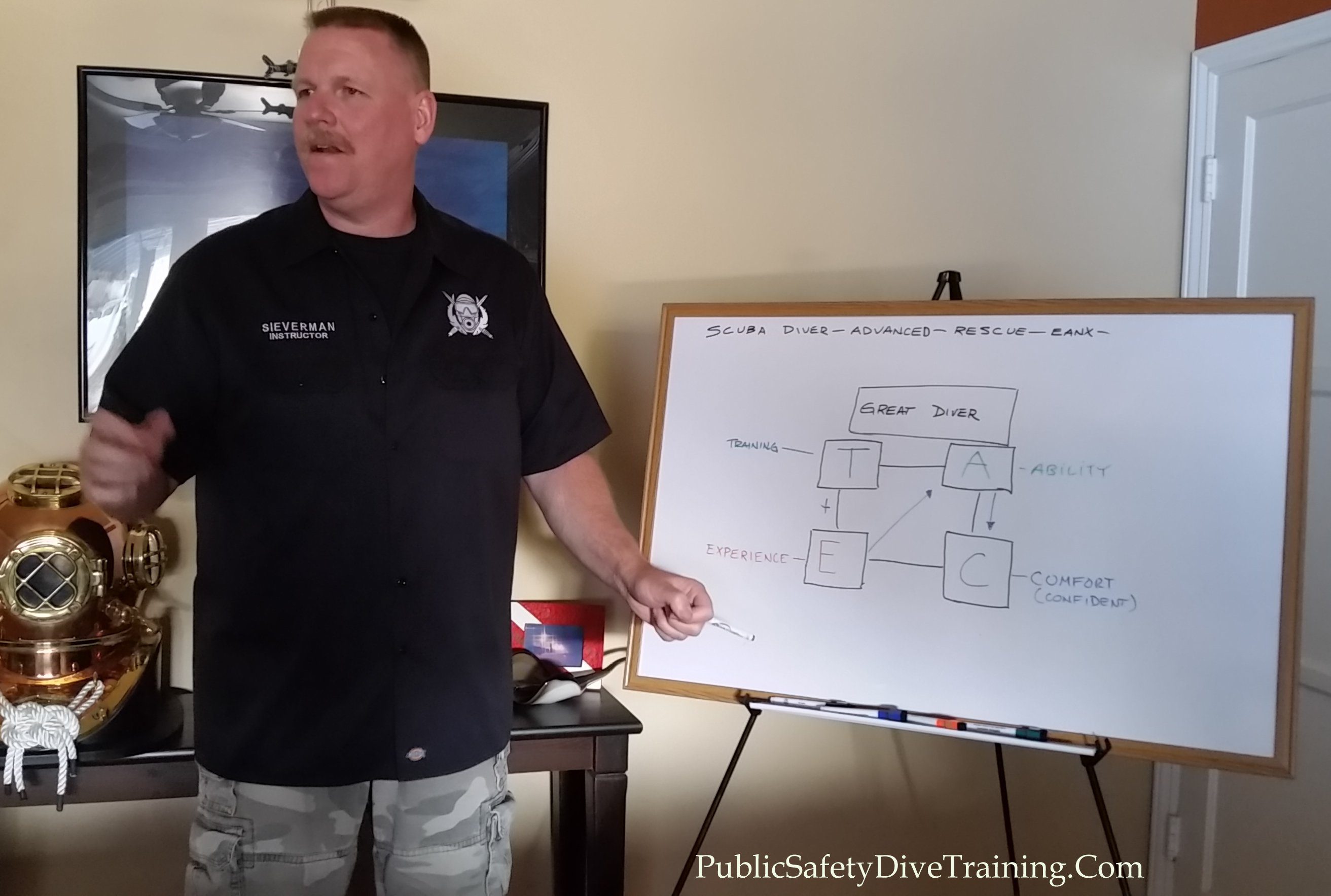Throughout the years I spent as a police training officer, I had the opportunity to spend some serious time teaching new officers the “ins and outs” of a difficult and demanding career. Spending hours breaking down complex and difficult skills often required a different approach to many of the standard training guidelines or norms. With this experience, I looked at the concept of teaching with small sets of goals or benchmarks in order to either help a trainee conquer the tasks or oftentimes, identify the shortcomings and document them as to why a new officer wasn’t going to complete training.
Documenting the details is one of the critical components of any successful program, be it police officer training, scuba certifications or any other formal training program. I wrote a comprehensive training matrix, identifying the critical skills, and provided copies to others. The matrix became a standardized training manual, and it is still in use today.
As scuba instructors, we strive to give our students the best possible training, offering them a wealth of knowledge and experience and making them the best possible divers. Placing a value on this can be tough. In the ultra-competitive scuba market where, all too often, some are offering to certify any comer as a diver in as little as two or three sessions for just a few dollars makes our task as NAUI Instructors offering quality instruction difficult.
As NAUI moves forward, we have to continue our mission to “educate the general public,” letting them know that excellent training is worth more as they are going to be better divers and therefore safer divers. Egos, opinions, cost and other factors can also influence this, so generating new clients and instilling the desire to be the best possible diver can be challenging. Explaining the difference between the class you provide versus the “other guy’s” requires a fair amount of educating the consumer, hoping that with the information you provide for them, they make the informed decision and choose you. Explaining the difference between a great diver and a mediocre one starts with the basics. Every lesson starts with that first step.
Identifying the components of any given complex task is a matter of breaking it down into its key components, and there is usually a formula or method to it. One evening, years ago, as I was explaining how training can be accomplished, I came up with a simple and easy-to-remember acronym: the TEAC method. Of course, this is simply another statement of the same formula used by all successful instructors. I simply gave it an easy-to-remember name. Explaining to new scuba students (or returning students) the importance of their training and promoting continuing education seems to be best achieved when introduced early. In the TEAC method, the ultimate goal (for both the instructor and student) is producing a well-trained and very capable diver(s).
“TEAC” (pronounced teek)

T – Training: This encompasses all aspects of training, including lecture, reading materials, practical application of skills, dry-land practice, confined water, evaluations, testing and so on.
E – Experience: All of the education in the world is no comparison to experience. Spending time performing the actual skills, tasks, etc. is how you become proficient, which leads us to the next part.
A – Ability: With training and experience, your abilities improve. It doesn’t matter what specific skill or task is being performed; the fundamentals remain the same. One link leads to the next, and without one, the entire process breaks down.
C – Comfort: (One might also substitute confidence, but that can be misleading). Learning the proper skills, practicing and mastering abilities creates a comfortable diver. Comfort comes from performing a task to the point where it becomes second nature, almost instinctual. A student cannot get to this level of comfort in the water without first going through the previous steps.
With the four parts of TEAC in place, the “structure” is a solid foundation to build upon. Eliminating or removing one of the components (blocks) will cause the entire structure to fail, and it cannot be repaired or built upon.
The use of this method applies to both my Public Safety Diver and recreational courses. It allows leading students on a path to a successful certification and a qualified diver.
Over the years, I have encountered divers who were “given” certification cards but cannot explain the basic skills. I have also met a Master Scuba Diver who couldn’t figure out his surface air consumption and a Divemaster who was unable to navigate a simple compass heading. When visiting a local dive park or dive resort, one can see divers who were either improperly trained or didn’t pay attention to what they were taught. We can’t “undo” bad training, but we can train properly, hopefully overcoming what they may have missed.
Staying competitive in a saturated market is tough. On social media, I read posts regarding NAUI instructors and their innovative and differing styles of teaching. They are trying new techniques and concepts while acting in accordance with the NAUI motto: “Dive Safety Through Education.” Reinventing new ways to improve our methods, being critical of our own actions, and being honest about how we lead a course is all important. When we focus on creating better divers, we are being better instructors.
I also solicit feedback from my students. Many students who were happy with their instruction simply move on. On the other hand, unhappy clients will typically provide several forms of feedback, though at times it is more just personal attack through negative comments or posts on social media. I give students an evaluation form at the first class session and most willingly return the form at the end. I explain that the evaluation is part of the course and it has to be turned in to complete the course. Of course, a few neglects to do so and have to be reminded. This feedback is a valuable tool and can be very helpful in my growth as an instructor.


